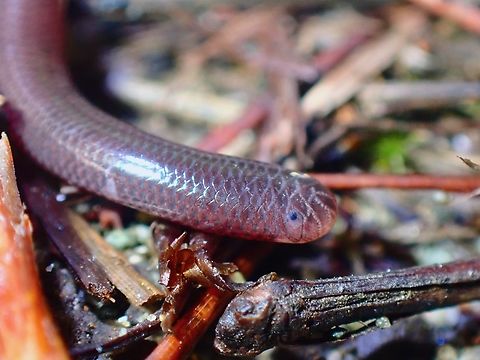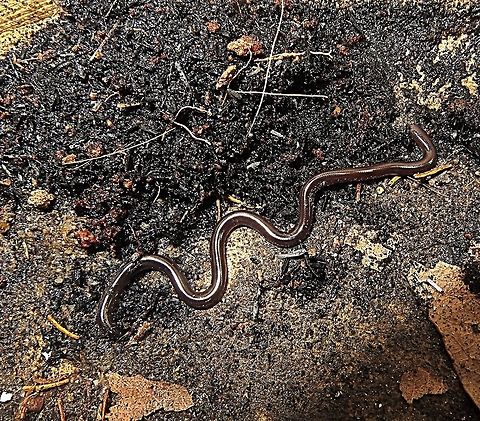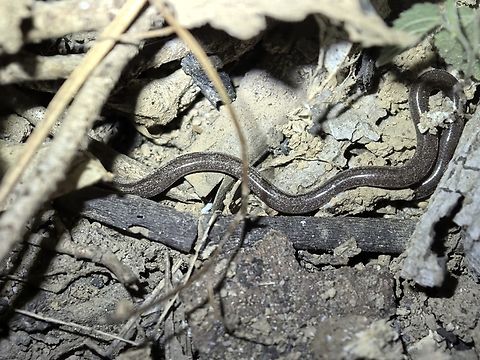
Appearance
Adults are small and thin, typically 6.35 -16.5 cm in length. The head and tail-tip look much the same, with no narrowing of the neck. The rudimentary eyes appear only as a pair of small dots under the head scales. The tip of the tail ends with a tiny, pointed spur. The head scales are small and resemble those on the body. Twenty rows of dorsal scales occur along the entire body. The coloration of the adults varies from shiny silver gray to charcoal gray or purple. The venter is grayish to brown. Juveniles are colored much the same as the adults.The tiny eyes are covered with translucent scales, rendering these snakes almost entirely blind. The eyes cannot form images, but are still capable of registering light intensity.

Naming
"I. braminus" is variously known as brahminy blind snake, flowerpot snake, common blind snake, island blind snake, and Hawaiian blind snake. The moniker "flowerpot snake" derives from the snake's incidental introduction to various parts of the world through the plant trade.The specific name is a latinized form of the word Brahmin, which is a caste among Hindus. No subspecies are currently recognized.

Habitat
Usually, they occur in urban and agricultural areas. These snakes live under ground in ant and termite nests. They are also found under logs, moist leaves, and humus in wet forest, dry jungle, and even city gardens. The distribution and survival of this group of snakes directly reflect soil humidity and temperature.Reproduction
This species is parthenogenetic and all specimens collected so far have been female. They lay eggs or may bear live young. Up to eight offspring are produced - all female and all genetically identical.Food
Their diet consists of the larvae, eggs, and pupae of ants and termites.References:
Some text fragments are auto parsed from Wikipedia.